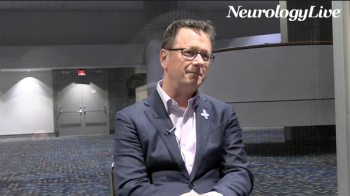
First-Ever CRISPR/Cas13-RNA Editing Therapy to be Tested in Phase 1 Study of Age-Related Macular Degeneration
Key Takeaways
- BRIGHT trial evaluates HG202, a CRISPR/Cas13 RNA-editing therapy, for nAMD after FDA clearance of the investigational new drug application.
- HG202 targets VEGF-A mRNA knockdown, potentially reducing frequent anti-VEGF injections and associated risks.
The phase 1 study, which is currently recruiting, includes a 4-week screening period, a 52-week treatment period, and a 4-year long-term extension to continue to test the effects of HG202.
A new phase 1, open-label, dose-escalation study, dubbed BRIGHT (NCT06623279), is set to test the effects of HG202, the world’s first-ever CRISPR/Cas13 RNA-editing therapy for the treatment of neovascular age-related macular degeneration (nAMD). This comes after HuidaGene Therapeutics, the drug manufacturers of HG202, announced that the FDA cleared its investigational new drug (IND) application.1
The multicenter trial is designed to assess the safety and tolerability of high-fidelity CRISPR-Cas13 RNA-editing therapy targeting knock-down of VEGF-A mRNA (HG202) in patients with nAMD, a disease that affects nearly 190 million people over the age of 60 worldwide. BRIGHT, which studies different single administration doses of HG202, will also include several secondary end points, including changes in best-corrected visual acuity (BCVA), central retinal thickness (CRT) measure, and the need for anti-VEGF rescue injections.
"This open IND for HG202 by the U.S. FDA-the first regulator to clear CRISPR/Cas13 for clinical development–marks a significant milestone for HuidaGene and the CRISPR RNA-editing field," Alvin Luk, PhD, MBA, CCRA, co-founder and chief executive officer at HuidaGene, said in a statement.1 "The strong preclinical data for HG202, combined with promising results from the first-in-human 'SIGHT-I' trial in China, underscored its potential to address AMD using a non-receptor binding pathway through the Cas13 RNA editor to knockdown VEGF-A mRNA."
HG202 is a CRISPR/Cas13 RNA-editing therapy delivered through 1 single adeno-associated virus vector to partially knock down the expression of VEGFA and thus inhibit CNV formulation in AMD. With its long-term, stable delivery system, the belief is that a one-time treatment of HG202 may potentially reduce the frequent injections and potential risks of currently available anti-VEGF therapies since it does not rely on the long-term expression of anti-VEGF antibodies.
BRIGHT includes a 4-week screening period, enrollment visit, treatment visit and 52 weeks follow-up period, and a 4-year long-term follow-up extension. The trial includes those aged 50-85 years who have active macular choroidal neovascularization (MNV) secondary to nAMD in the study eye. There are several exclusions, including patients with retinal or subretinal hemorrhage, scarring, or fibrosis of greater than 50% of the total lesion in the study eye. In addition, the trial excludes those with other ocular diseases that may affect central vision in the study eye, patients with any other cause of CNV than nAMD in the study eye, and patients who’ve underwent a prior gene therapy or oligonucleotide therapy.2
"Up to 46% of AMD patients respond poorly or develop resistance to anti-VEGF therapies. AMD patients deserve safe, effective treatment options," Xin Zhang, MD, MSc, chief operating officer and chief medical officer at HuidaGene, said in statement.1 "The BRIGHT trial will evaluate HG202's safety and efficacy to address this gap. We look forward to enrolling patients soon."
HG202 is currently being assessed in another first-in-human trial, dubbed SIGHT-I (NCT06031727), of patients with nAMD. Similar to BRIGHT, this open-label, multcenter, dose-finding trial primarily assessed the safety, tolerability, and efficacy of HG202 in patients with nAMD who are either non-responsive or responsive to previous anti-VEGF treatments. The study, which takes place at 2 leading retinal centers (Tianjin Medical University Eye Institute and Shanghai Eye and ENT Hospital of Fudan University), used the same primary and secondary end points as BRIGHT.3
REFERENCES
1. HuidaGene Therapeutics Receives the First-Ever FDA Clearance of CRISPR/Cas13 RNA-Editing HG202 for Macular Degeneration. News release. HuidaGene Therapeutics. November 4, 2024. Accessed November 8, 2024. https://www.prnewswire.com/news-releases/huidagene-therapeutics-receives-the-first-ever-fda-clearance-of-crisprcas13-rna-editing-hg202-for-macular-degeneration-302294679.html
2. Open-laBel Dose-escalation Study for CRISPR/cas13- Rna TargetInG THerapy for the Treatment of Neovascular Age-related Macular Degeneration in Phase I Trial (BRIGHT). Good Clinical Practice Network. Updated September 30, 2024. Accessed November 8, 2024. https://ichgcp.net/clinical-trials-registry/NCT06623279
3. HuidaGene Therapeutics Announces First Patient Dosed Of The World's First Novel CRISPR/Cas13 RNA-Editing Therapy HG202 For Neovascular Age-related Macular Degeneration. September 6, 2023. Accessed November 8, 2024. https://www.huidagene.com/new/news/43
Newsletter
Keep your finger on the pulse of neurology—subscribe to NeurologyLive for expert interviews, new data, and breakthrough treatment updates.


































